Okaryo (Minamiuonuma, Japan)
Okaryo
1269-1 Yamaguchi, Minamiuonuma-shi, Niigata, 949-7122
02.5775.3604
r.tabelog.com/niigata/rstdtl/15000510/ (Tabelog, restaurant has no web site)
Sat 03/22/2008, 12:30p-01:30p
Okaryo is a soba (buckwheat) noodle restaurant run by the famous sake brewery Hakkaisan. We visited the brewery earlier in the morning, so a meal at Okaryo proved to be the perfect lunch spot.
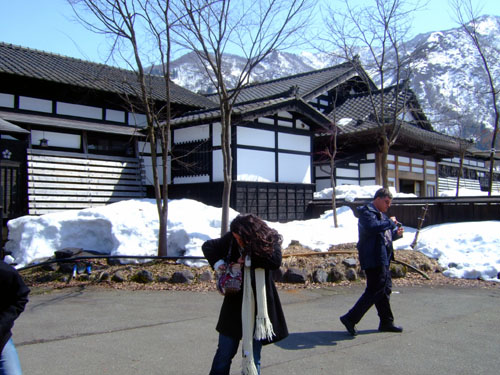
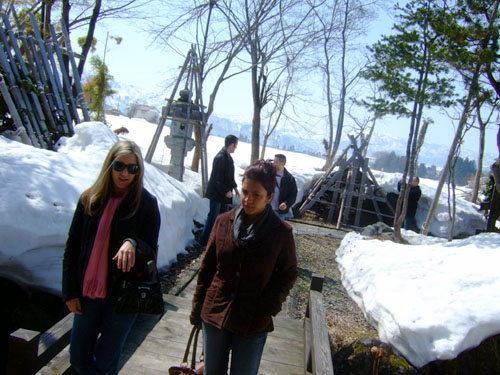
The building was once used as a ryokan (inn). Normally, customers eat in a more typical restaurant-style part of the building (not shown), but since we had about 20 people in our group, we were brought into the tatami-clad main dining room of the ryokan part. Although it was not particularly cold (about 50°F), there was a plenty of snow left on the ground.
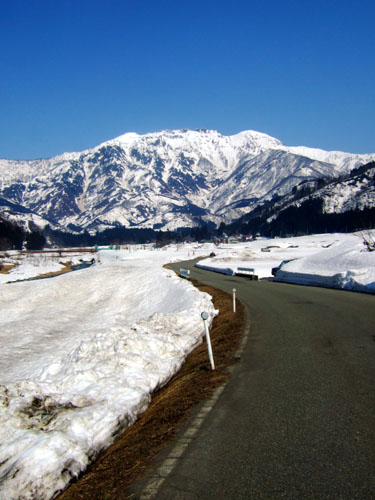
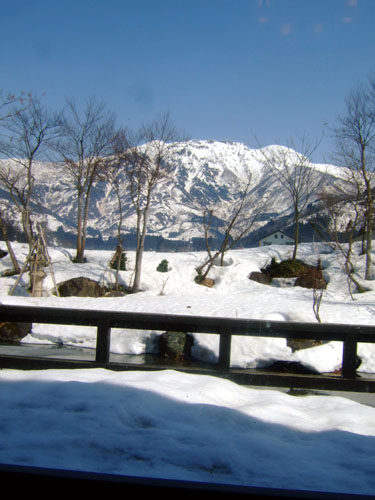
Strictly speaking, "Hakkaisan" refers to a range of rocky and steep mountains, which ever since ancient times, were considered holy. The tallest one (1,778m, or 5,927ft) is called Nyudozan. The photo on the left was from outside the restaurant, while the other was the view from where we were seated.
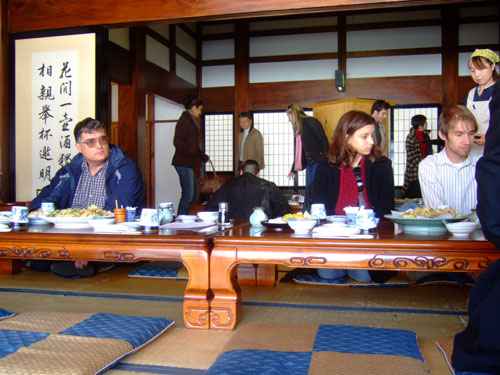
This is the main dining room for the ryokan section of the structure. When we arrived, the tables were already set up, with tempura and pickles ready to be tasted. This was a special arrangement made with the restaurant, as we were hard pressed for time (in fact, we almost missed the shinkansen back to Tokyo!).
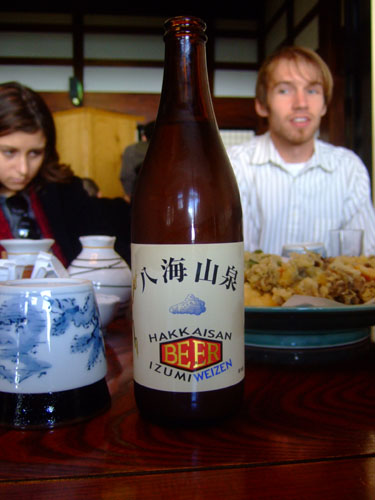
Unbeknownst to me, Hakkaisan also brews beer. What we had was Weizen, or wheat beer. Other variations include Pilsner and Pale Ale.
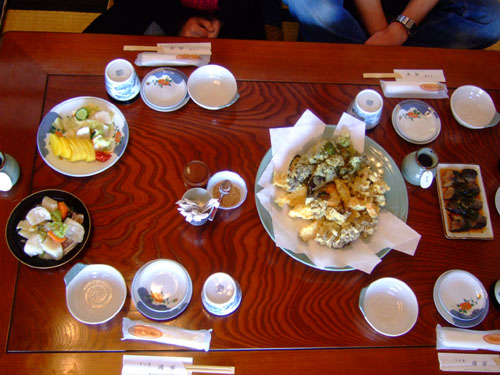
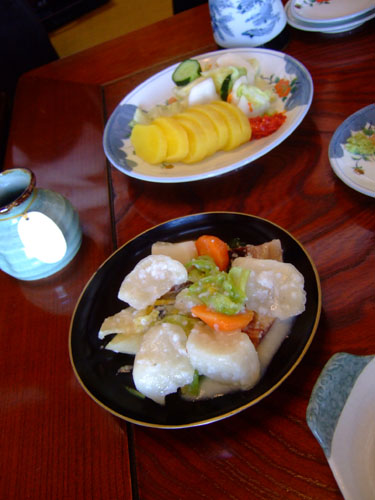
Okaryo is located in the yukiguni, or snow country, where inhabitants used to be locked in by heavy accumulation of snow without access to fresh ingredients. Thus, they ate preserved foods during the long winters. Of course, the situation is different now, but such traditions have stuck around. In the photo on the left, the rightmost dish is pickled herring, while the two leftmost are plates of different pickled vegetables. The pickles were all home-made: one standard preparation (right photo, top), and one made with sake lees (right photo, bottom).
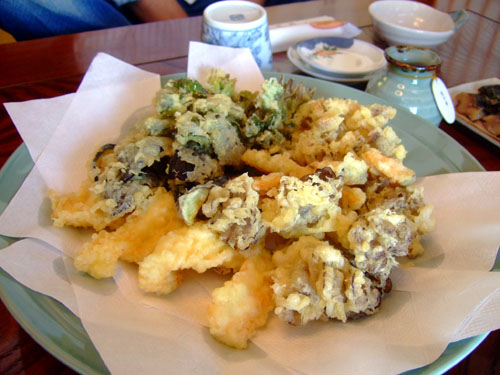
The tempura we had consisted of vegetables from the local area. The green one was fukinoto, which is the bud of the fuki (Japanese butterbur). Come spring, fuki is the first plant to break through the soil, even in the presence of snow. For local people, experiencing the vegetable's bitter taste gives them an appreciation for the spring. Others ingredients were shiitake mushroom, maitake mushroom, renkon (lotus root), kabocha (Japanese pumpkin), and gobo (burdock). Very nice!
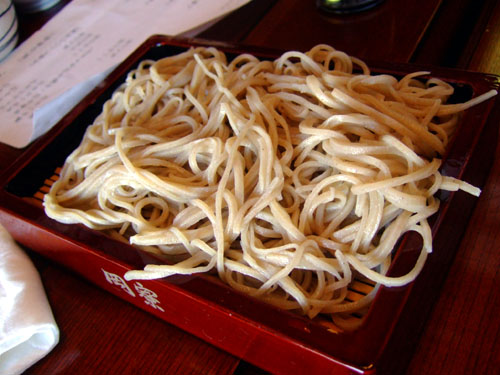
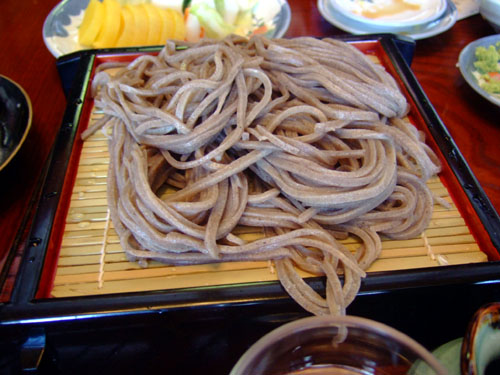
The soba on the left, with a lighter color, is 2-8 soba, made from 80% buckwheat and 20% wheat. The soba on the right was 100% buckwheat, made in the inaka (country) style, meaning the shell of the buckwheat seed (which is usually milled away) is collected and used when kneading the noodles. We also had 100% buckwheat noodles that were sans-shell and light colored. Two soba tsuyu dipping sauces were provided: one Edo-style (soy sauce, mirin, and sugar) and the other inaka-style (which adds iriko, or dried anchovies). Near the end of the meal, a pot containing the hot water used to cook the noodles (soba-yu) was brought in. We poured it to the remainder of the dipping sauce to make a cup of soothing hot soup. Soba-yu is especially tasty when the hot water was used to cook 100% buckwheat noodles.
Okaryo was easily the best lunch of the entire trip. And the soba, well it set a new standard for me. The only problem was that I couldn't eat as much as I wanted to. Why? Well I knew we had a great meal at Natori coming up that night, so I didn't want to spoil my appetite! Even so, I ate a bit too much. I was only planning on eating about half a zaru's worth of soba, but ended it eating the entire plate (and then some) since it was so tasty!
1269-1 Yamaguchi, Minamiuonuma-shi, Niigata, 949-7122
02.5775.3604
r.tabelog.com/niigata/rstdtl/15000510/ (Tabelog, restaurant has no web site)
Sat 03/22/2008, 12:30p-01:30p
Okaryo is a soba (buckwheat) noodle restaurant run by the famous sake brewery Hakkaisan. We visited the brewery earlier in the morning, so a meal at Okaryo proved to be the perfect lunch spot.


The building was once used as a ryokan (inn). Normally, customers eat in a more typical restaurant-style part of the building (not shown), but since we had about 20 people in our group, we were brought into the tatami-clad main dining room of the ryokan part. Although it was not particularly cold (about 50°F), there was a plenty of snow left on the ground.


Strictly speaking, "Hakkaisan" refers to a range of rocky and steep mountains, which ever since ancient times, were considered holy. The tallest one (1,778m, or 5,927ft) is called Nyudozan. The photo on the left was from outside the restaurant, while the other was the view from where we were seated.

This is the main dining room for the ryokan section of the structure. When we arrived, the tables were already set up, with tempura and pickles ready to be tasted. This was a special arrangement made with the restaurant, as we were hard pressed for time (in fact, we almost missed the shinkansen back to Tokyo!).

Unbeknownst to me, Hakkaisan also brews beer. What we had was Weizen, or wheat beer. Other variations include Pilsner and Pale Ale.


Okaryo is located in the yukiguni, or snow country, where inhabitants used to be locked in by heavy accumulation of snow without access to fresh ingredients. Thus, they ate preserved foods during the long winters. Of course, the situation is different now, but such traditions have stuck around. In the photo on the left, the rightmost dish is pickled herring, while the two leftmost are plates of different pickled vegetables. The pickles were all home-made: one standard preparation (right photo, top), and one made with sake lees (right photo, bottom).

The tempura we had consisted of vegetables from the local area. The green one was fukinoto, which is the bud of the fuki (Japanese butterbur). Come spring, fuki is the first plant to break through the soil, even in the presence of snow. For local people, experiencing the vegetable's bitter taste gives them an appreciation for the spring. Others ingredients were shiitake mushroom, maitake mushroom, renkon (lotus root), kabocha (Japanese pumpkin), and gobo (burdock). Very nice!


The soba on the left, with a lighter color, is 2-8 soba, made from 80% buckwheat and 20% wheat. The soba on the right was 100% buckwheat, made in the inaka (country) style, meaning the shell of the buckwheat seed (which is usually milled away) is collected and used when kneading the noodles. We also had 100% buckwheat noodles that were sans-shell and light colored. Two soba tsuyu dipping sauces were provided: one Edo-style (soy sauce, mirin, and sugar) and the other inaka-style (which adds iriko, or dried anchovies). Near the end of the meal, a pot containing the hot water used to cook the noodles (soba-yu) was brought in. We poured it to the remainder of the dipping sauce to make a cup of soothing hot soup. Soba-yu is especially tasty when the hot water was used to cook 100% buckwheat noodles.
Okaryo was easily the best lunch of the entire trip. And the soba, well it set a new standard for me. The only problem was that I couldn't eat as much as I wanted to. Why? Well I knew we had a great meal at Natori coming up that night, so I didn't want to spoil my appetite! Even so, I ate a bit too much. I was only planning on eating about half a zaru's worth of soba, but ended it eating the entire plate (and then some) since it was so tasty!
0 Comments:
Post a Comment
Subscribe to Post Comments [Atom]
<< Home